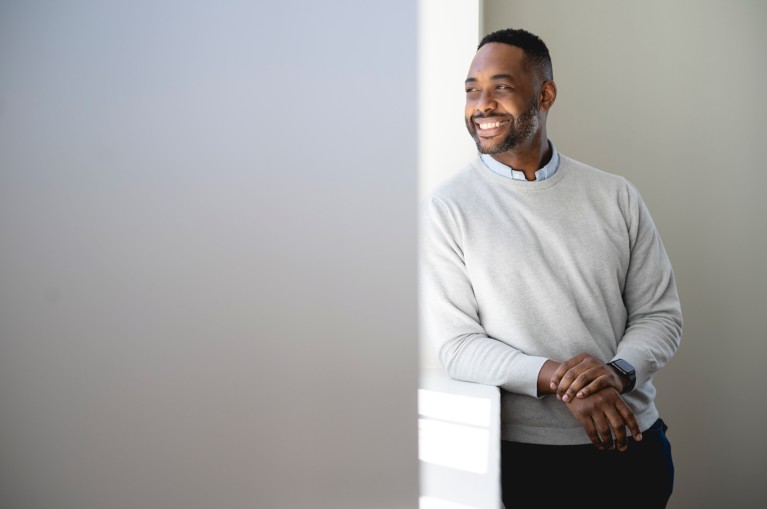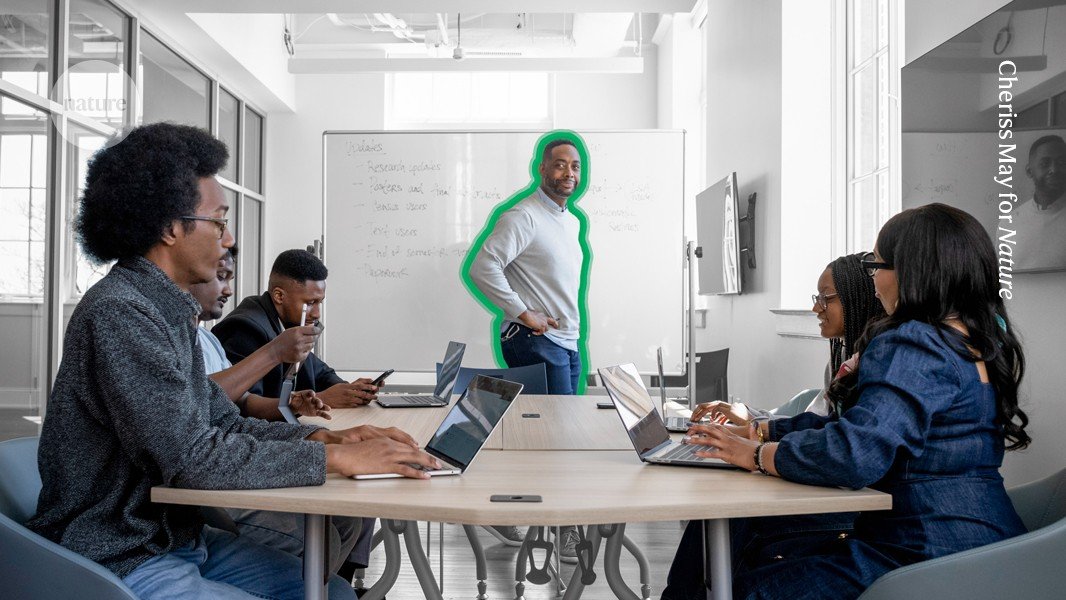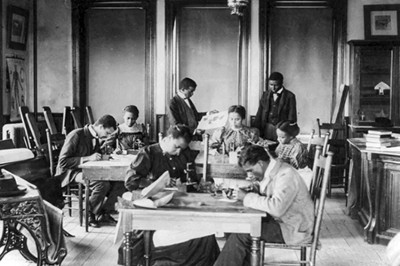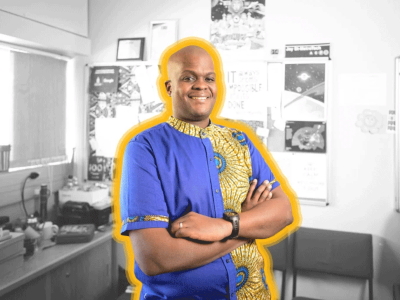Inclusion — not gatekeeping — is a theme in mathematician Nathan Alexander’s laboratory at Howard University in Washington DC. His quantitative-histories workshop is a computational and community hub for studying social problems, such as housing insecurity and homelessness. He founded that lab while in a previous post at Morehouse College in Atlanta, Georgia, and has now expanded it to include Howard and another site at the Institute for Racial Justice in Chicago, Illinois.
“We have anyone and everyone come together,” he says. “Our youngest member is in high school, and our oldest is someone who, in their late 60s, was interested in returning to mathematics. We have members from the community, including formerly incarcerated persons,” he adds.
Undergraduate and graduate students, along with collaborators from outside academia, all have a place at the table. By adopting a community-centred mindset, the team approaches problems with a blend of academic training and real-world experience. As a result, team members learn from each other, broaden their views on the problems they are studying and obtain better results than could be achieved without that diversity of perspectives.
The financial shackling of historically Black universities in the United States
For instance, Alexander’s lab is in the early stages of a project to use the US Census Bureau’s community resilience estimates (CRE) — a metric of how vulnerable neighbourhoods are to disasters — to probe housing insecurity and homelessness.
“Each member of our group is taking on an area of the United States that they are familiar with and conducting a local analysis to help us make sense of the different features across geographical contexts, and by state,” Alexander says. The team is also building a set of statistical models that can be used to compare relationships between the CRE and measures of segregation.
Alexander, who is also assistant graduate director of the Center for Applied Data Science and Analytics at Howard, notes that it’s a common mistake to view mathematics as a universal pursuit that everyone approaches in the same way. Instead, as he tells Nature’s careers team, his team members each approach data-driven problems with their own unique lens.
What is the great passion that has driven you as a mathematician?
Solving problems. At some point in studying mathematics, you learn a method to solve a problem. And then, as you learn more, you realize that there are many different ways to approach a problem. That has been the impetus for my interdisciplinary work — the idea that we can ‘patchwork’ our way to solutions and think about different fields and what they offer.
Is there one thing in your career that you wish you could revisit?
My knee-jerk reaction is that things have really worked out in a way that has been beautifully scary. So I’m content with my choices.
Collection: Changemakers in science
If I could go back and change one thing, I would spend a little more time in graduate school and do more exploring. At the time, I was broke, and wanted to be done with my studies, so I rushed through; I said to myself, let me get my dissertation taken care of and then I can begin my actual academic career. But now, I think it’s all about investigating and solving problems, and as a graduate student, I didn’t do enough of that. Now I’ve found more time to just do that and learn with my students and our community members.
What is the coolest discovery to come out of your work?
We have found some really abstract connections between mathematical fields — such as graph theory, number theory, probability, game theory — and real-world problems.
The CRE census analysis is one example of our attempts to model real-world factors by taking a numerical analytic approach initially. Our goal is to consider mathematical insights, using probability and statistics, before moving forward with a single methodological model.
Mathematics is often viewed as being universal, but the field of ethnomathematics reveals that mathematical practices look different across cultures, communities and their histories. For the sake of universality, we would want to steer clear of a single frame of reference or method. Indeed, what we see among mathematicians today are attempts to make sense of a diverse set of problems across a diverse set of disciplines which give attention to the different cultural foundations of mathematics. People use mathematics differently, and they have done so throughout history.
Our lab’s goal is to learn how to balance a focus on deep theoretical aspects with the need to quantify things. Often when we quantify, or mathematize, things, you want to get down to their essence, to their core. We have been working hard all these years to maintain those theoretical, critical foundations that contribute to intersections between maths and society. For example, we can quantify changes in demographics over time in a specific community, such as the effects of gentrification, but we see that these processes play out differently in cities such as Atlanta and Washington DC. We want to understand those nuances in both our theory and quantification.

If he could be a graduate student again, Alexander says he would spend more time simply exploring ideas.Credit: Cheriss May for Nature
Why is running an inclusive research group important to you?
Anyone who visits our lab understands clearly that we try to get rid of hierarchy as much as possible. So, although I’m the principal investigator, founder and leader of the lab, I think that empowering everyone in our space — other faculty members, students and also our elders — to give us that context, that intuition, has been our greatest asset. We call this a near-peer model.
For example, a younger team member might have experience of recently released computational tools, whereas a more experienced member might discuss the different tools used over the course of their lifetime.
Implementing this near-peer model has been a learning process. As faculty members, we’re often told to be the expert. I’ve tried to do the opposite of that by saying, “Here’s what I’m able to contribute. What do other people think?” That has led to this explosion of ideas.
I want to ensure that Africans take part in the AI revolution
It also opens up space for all lab members to play around with ideas in a way that is not always possible in a conventional classroom setting. This ultimately leads to a ripple effect in which conventional lines of inquiry can be supplemented by, at times, abstract inquiries that result in many more ideas. We try our best to avoid a top-down model and collect regular feedback from lab members.







